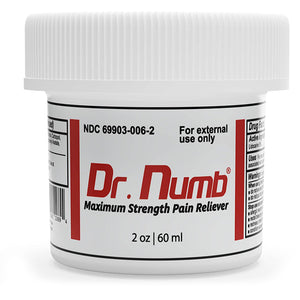Minor surgery like cataract surgery, circumcision, breast biopsy, and arthroscopy are joint. A minor surgery usually doesn't require a hospital stay and is quick and minimally invasive.
These surgeries are crucial in treating various medical conditions, such as skin lesions, cataracts, circumcision, wisdom teeth removal, and vasectomy. Minor surgery may sound less daunting, but knowing what to expect before committing to a procedure is still essential.
This blog post will examine the five most common minor surgeries, their procedure steps, benefits, and risks.
Common Minor Surgeries: Top 5 Types [ Explained]
![The Top 5 Minor Surgeries [ Explained]](https://cdn.shopify.com/s/files/1/0769/0872/4530/files/Common_Minor_Surgeries.jpg?v=1693478755)
Minor surgeries are pivotal in addressing various health concerns with minimal invasiveness and a shorter recovery period in medical procedures. This section delves into five common minor surgeries, highlighting their significance, methods, and benefits.
Skin Lesion Removal
Skin lesions are abnormal growths on the skin that can be either benign or malignant. These growths can sometimes cause discomfort or interfere with regular daily activities. The most common types of skin lesions that require removal include:
- Moles.
- Warts.
- Skin tags.
- Seborrheic keratosis.
- Actinic keratosis.
- Basal cell carcinoma.
- Squamous cell carcinoma.
- Melanoma.
Procedure Process
The process for removing skin lesions involves the following steps:
- Numbing the area with local anesthesia.
- They are cutting or shaving off the lesion or using other techniques such as laser or cryotherapy.
- It sends the removed tissue for biopsy to determine if it is cancerous.
- Inspect the wound with a sterile bandage.
- We are providing aftercare instructions and follow-up appointments.
Cataract Surgery
A cataract is a common age-related condition that affects the eye's lens, causing cloudy vision. Cataract surgery involves removing the diseased lens and replacing it with an artificial one.

Age-Related Cataract
Cataracts are a common problem among older adults and can develop gradually over time. Risk factors for developing cataracts include:
- Age.
- Genetics.
- Smoking.
- Diabetes.
- Exposure to UV light.
Procedure Details
Under local anesthesia, cataract surgery involves the following steps:
- Incision: A small incision is made in the eye to access the affected lens.
- Removal: The cloudy lens is removed using ultrasound or laser techniques.
- Replacement: An artificial lens is inserted in place of the removed lens.
- Recovery: Patients can usually go home on the same day and must follow aftercare instructions, including using eye drops and avoiding certain activities.
Circumcision
Circumcision removes the foreskin from the penis. This procedure is usually done for cultural or religious reasons, although it may be medically necessary in some cases.
Reasons Behind Circumcision
Common reasons for circumcision include:
- Religious or cultural beliefs.
- Medical conditions include phimosis, balanitis, or recurrent urinary tract infections.
- Personal preference.
- Prevention of sexually transmitted infections.
Procedure Steps
The circumcision procedure involves the following steps:
- Anesthesia: The area is numbed using either local or general anesthesia.
- Removal: The foreskin is removed using a scalpel or other surgical instrument.
- Closure: The remaining skin is stitched or glued together to promote healing.
- Recovery: Patients must avoid certain activities, such as sexual intercourse or strenuous exercise until the area has fully healed.
Wisdom Teeth Removal

The wisdom teeth grow last, usually between 17 and 25. When wisdom teeth do not have enough room to grow or grow at an angle, they can become impacted, causing pain and infection.
Causes of Impacted Teeth
Wisdom teeth can be impacted for various reasons, including:
- Crowding in the mouth.
- An angle or direction of growth that prevents eruption.
- Complicated tooth development.
- Late tooth growth.
Process of Removal
The process of removing impacted wisdom teeth involves the following steps:
- Anesthesia: The area is numbed with local or general anesthesia.
- Access: The gum tissue is removed to access the tooth.
- Removal: The tooth is either pulled out in one piece or broken into smaller pieces for easier removal.
- Closure: The gum tissue is stitched back into place for healing.
- Recovery: To manage discomfort and swelling, patients should follow aftercare instructions, including ice packs and pain medication.
Vasectomy
A vasectomy is a permanent contraceptive procedure that involves cutting or blocking the vas deferens, preventing sperm from traveling to the penis.
Permanent Contraceptive
- A vasectomy is a permanent form of contraception and should only be considered by individuals who are sure they do not want to have children in the future.
Procedure Details
The vasectomy procedure involves the following steps:
- Anesthesia: It is numbed using local anesthesia.
- Access: The vas deferens are located and cut the sperm-carrying tubes.

Minor Surgery: Benefits and Risks
Minor surgeries have emerged as a valuable and practical approach for addressing various health concerns in medical interventions. This section delves into the benefits and potential risks of these procedures, providing a comprehensive understanding of their impact on patient well-being.
Benefits
Minor surgeries offer several distinct advantages that make them a preferred choice for patients and medical professionals. These benefits contribute to their popularity and widespread adoption.
Convenience and Time
- Minor surgeries are typically performed outpatient, eliminating the need for hospitalization.
- Patients can return home on the same day as the procedure, reducing disruption to their daily routines.
- Shorter recovery times mean patients can resume their regular activities more quickly.
Less Invasive
- Compared to major surgeries, minor procedures involve smaller incisions and less manipulation of tissues.
- This results in reduced trauma to the body, minimizing post-operative pain and discomfort.
- Smaller incisions also lead to more minor scars, often more cosmetically favorable.
Lower Cost

- Minor surgeries are generally more cost-effective than significant surgeries for patients and healthcare systems.
- The reduced need for hospital stays and extensive resources contribute to lower overall expenses.
- It makes healthcare more accessible and manageable for patients with limited financial resources.
Risks
While minor surgeries offer numerous benefits, it's essential to recognize that no medical procedure is entirely without risks. Understanding these potential complications is crucial for making informed decisions and ensuring a safe outcome.
Infection
- Even minor procedures risk infection, leading to complications and prolonged recovery.
- Strict adherence to sterile techniques and proper wound care is essential to minimize this risk.
- Patients must follow post-operative instructions to reduce the likelihood of infection.
Bleeding
- Any surgical procedure can lead to bleeding, though the risk is generally lower in minor surgeries.
- Surgeons take precautions to control bleeding during the procedure.
- Symptoms of excessive bleeding should be observed after the surgery, such as persistent or increasing pain, swelling, or a change in wound appearance.

Anesthesia Complications
- Anesthesia, even in minor surgeries, can present risks such as allergic reactions or adverse effects.
- While rare, patients should disclose their medical history and any allergies to anesthesia to minimize these risks.
- The medical team carefully monitors patients during surgery to promptly address potential complications.
Conclusion
Minor surgeries are medical procedures that offer several benefits to patients, including convenience, less invasion, lower costs, and faster recovery. The most common minor surgeries are skin lesion removal, cataract surgery, vasectomy, and circumcision.
These procedures are usually safe and effective but carry risks like infection, bleeding, and anesthesia complications. If you need a minor surgery, do not hesitate to discuss your options with a medical professional. They will be able to provide you with the necessary information and help you make an informed decision about your health.










![The 16 Best Fastest Way To Remove A Mole Naturally [DIY]](http://drnumb.com/cdn/shop/articles/What_Is_the_Fastest_Way_to_Remove_a_Mole_Naturally__16_Solutions_DIY.jpg?v=1704371079)




